 |
| @¡Lecture |
|
Through the excavation and research at Anatolian highland, Turkey, where relics of ten thousand yearsf culture lie in layers |
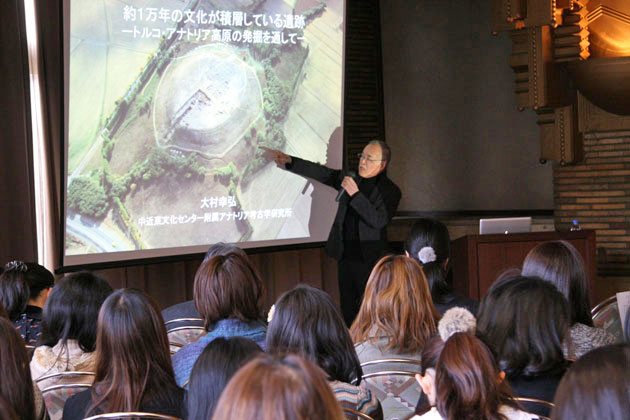 |
| Dr. Sachihiro Omura as giving a lecture Features of Kamen-Kalehoyuk relic being explained using aerial photos |
| A lecture entitled gThrough the excavation and research at Anatolian highland, Turkey, where relics of ten thousand yearsf culture lie in layersh was held inviting Dr. Sachihiro Omura, director, Japanese Institute of Anatolian Archaeology, Middle Eastern Culture Center in Japan as lecturer. Dr.Omura has been leading the excavation and research at the site of Kamen-Kaleh?y?k over 27 years. Dr. Omura introduced ancient civilization in the Anatolian region from the viewpoint of an archaeology reflecting his experiences of years of excavation.
In the first section it was explained using pictures or cross sectional drawings of the layers from the relics that the Kamen-Kalehoyuk site is located on Anatolian highland, crossroads of cultures, where remainders of various cultures of over 10 thousand years lie in layers, e.g. artifacts from Ottoman Turk, Alexandrian silver coins, Polish coins from 17th century, or ceramic ware from Min dynasty, and that the purpose of excavation and research is to arrange ecultural chronologyf, or echronological tablef. Dr. Omurafs following remark was very impressive. He said gThe Japanese have had nothing to do with the arrangement of the chronological tables of Europe or West Asia which are used in the classes of world history in Japan. And, mere translations of the works by the Western archaeologists are being used h. In the second section, various articles excavated were shown with the comment on the differences between eexcavation and researchf and earchaeologyf. An effort of preserving cultural assets was also explained introducing the background of the establishment of the museum in 2010 including the steps of creating a Japanese garden and organizing the research institute. Dr. Omura said, gIn the excavation sites conducted by the Western research institutes, there is no end of robbing of the relicsh, and emphasized, gIt is very important to elaborately explain the local people, the ones who are to ultimately protect the relics, why we conduct such an excavation research. In the final part, he mentioned gCauses of downfall of a kingdom can be well explained when you examine the layers that dates back 100 years. Japanese culture has seen three big changes. The first change occurred under the influence of China, the second that of Mongolia, and the third that of the USA after the Second World War.h And Dr. Omura concluded, gBy studying the relations of Ancient Japan and Anatolia, we can read many aspects of modern Japan. In that sense, archaeology is indeed a tool to know the modern world. It was a meaningful occasion for us to have listened to the lecture of Dr.Omura, an active scholar on the front line, about the culture as well as the way of life from the archaeological point of view. |
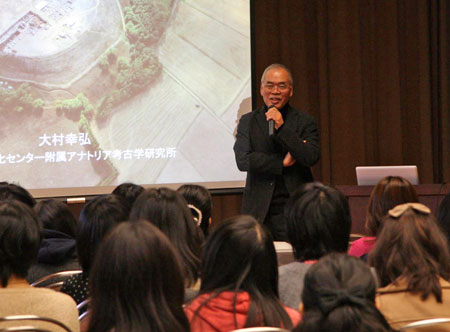 |
| Dr. Sachihiro Omura as giving a lecture |
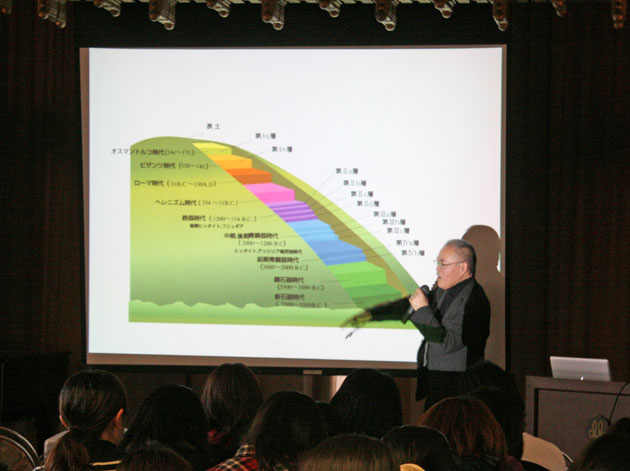 |
| Cross sections of layers from 10 thousand years in Kamen relic being explained |
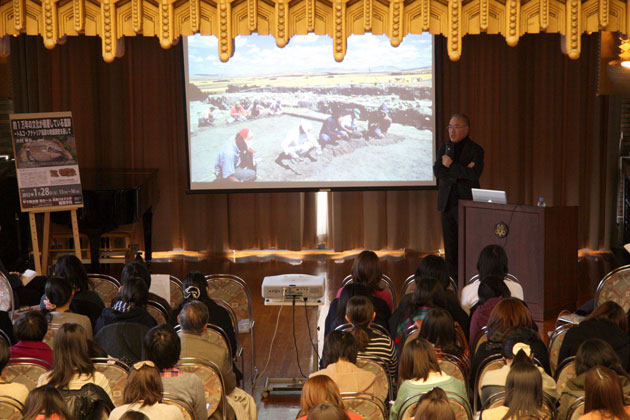 |
| The site of excavation |
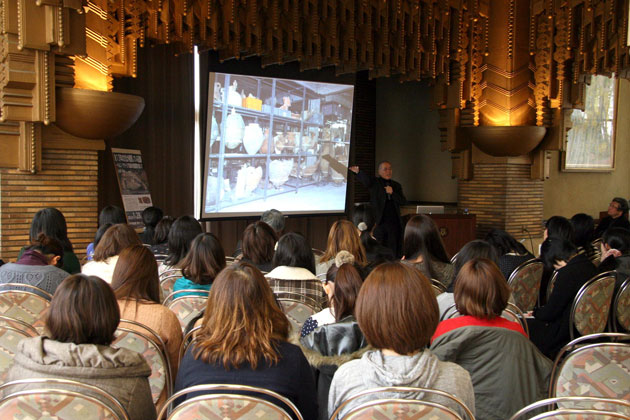 |
| Dr. Sachihiro Omura as giving a lecture |
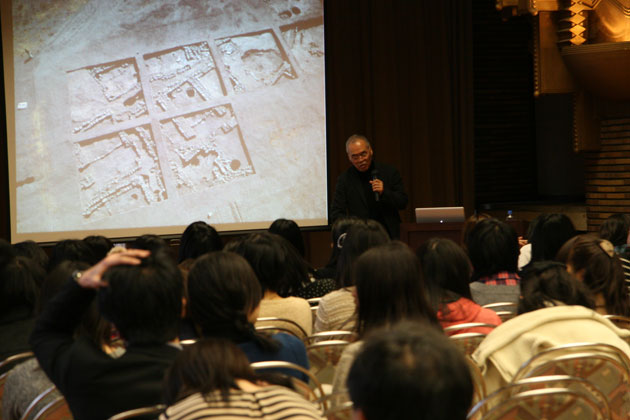 |
| Excavated cities being explained using aerial photos |
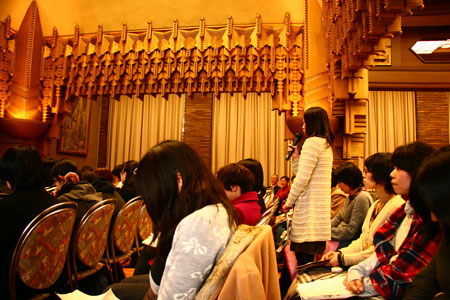 |
| Q&A session |
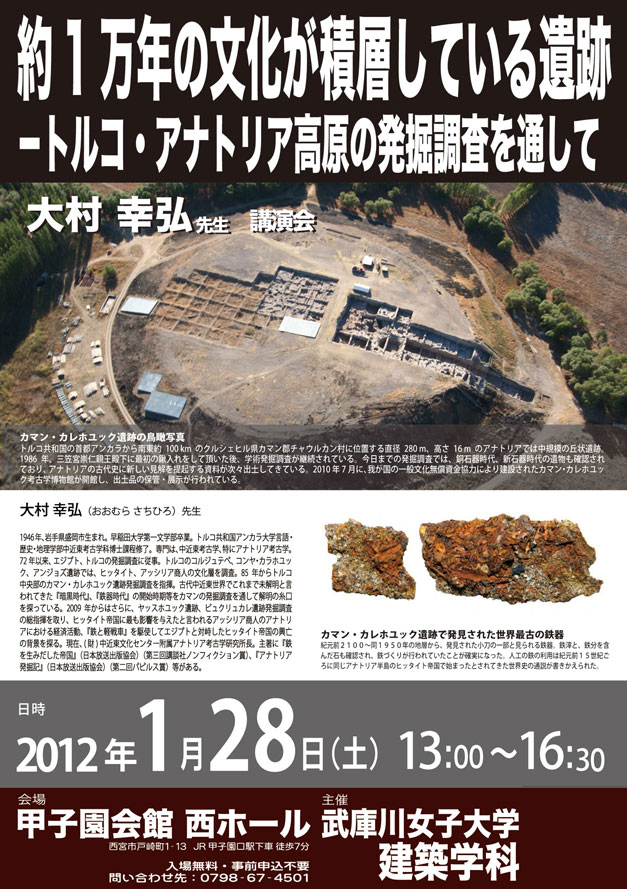 |
| >>TOP |
| Copyright 2005-2012 Mukogawa Women's University.All rights reserved. |